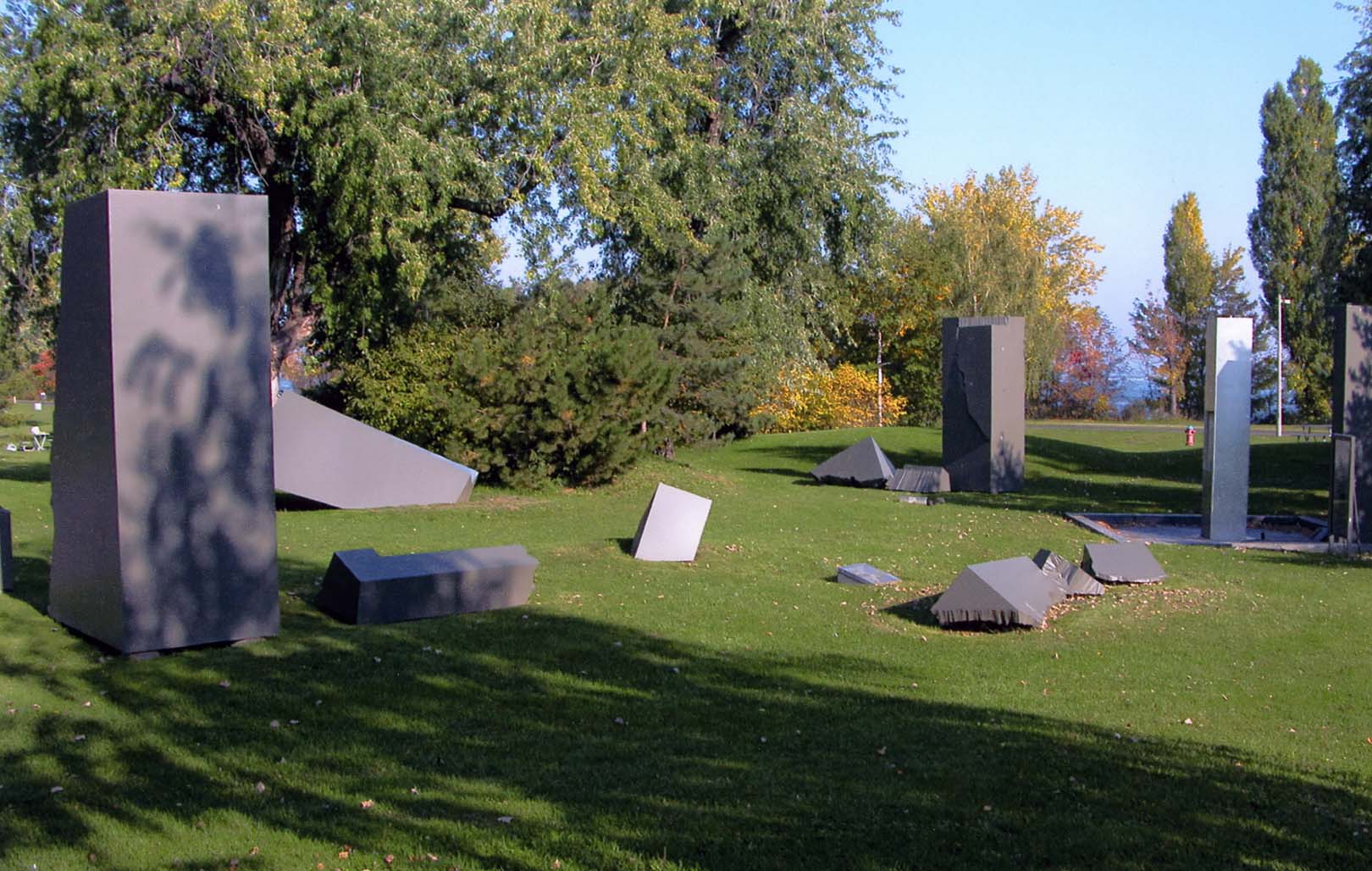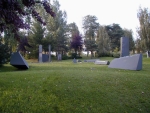Georges Dyens
Hommage aux forces vitales du Québec
1987
Presentation of the artwork
The artwork stands in Place René-Lévesque in Parc des Rapides, bordered on one side by Boulevard LaSalle and on the other by the St. Lawrence River. The watercourse, one of Québec’s vital arteries, fits well within the theme of the artwork.On the site, fragments of an exploded cube surround a central column that projects holograms. The fragments, in irregular shapes and of different sizes, are arranged in trajectories corresponding to Québec’s 18 regions. The fragments are dark brown in colour, but some of their parts are metallic. The holograms are projected essentially northward, toward Québec. In the artist’s view, the artwork evokes the vital energy of the people of Québec.
Associated events
Commissioned by the Ville de LaSalle to mark its 75th anniversary, the work was transferred to the Ville de Montréal in 2002.
Georges Dyens
Georges Dyens studied sculpture with artist Yossip Zadkine at La Grande Chaumière de Paris, then at the École nationale supérieure des beaux-arts de Paris. During the 1960s, he represented France at numerous international events, before moving to Canada in 1968. In the early 1980s, he discovered holography. His holosculptures have been displayed at the Museum of Holography in New York and were brought together in a retrospective at the Musée du Bas-Saint-Laurent in 2010. Dyens has produced a number of works of public art, among them Boomerang for the Musée de la civilisation in Québec City.
Awards and honours
- Grand Prix d'excellence en holographie, Shearwater Foundation, New York, 1994
- Prix du Bronze (Prix Susse), Biennale de Paris, Paris, 1963
- Prix de la Critique Allemande, Symposium des sculpteurs européens, Berlin, 1962
- 1er Grand Prix de Rome (sculpture), Institut de France - Académie des Beaux-Arts, 1961






